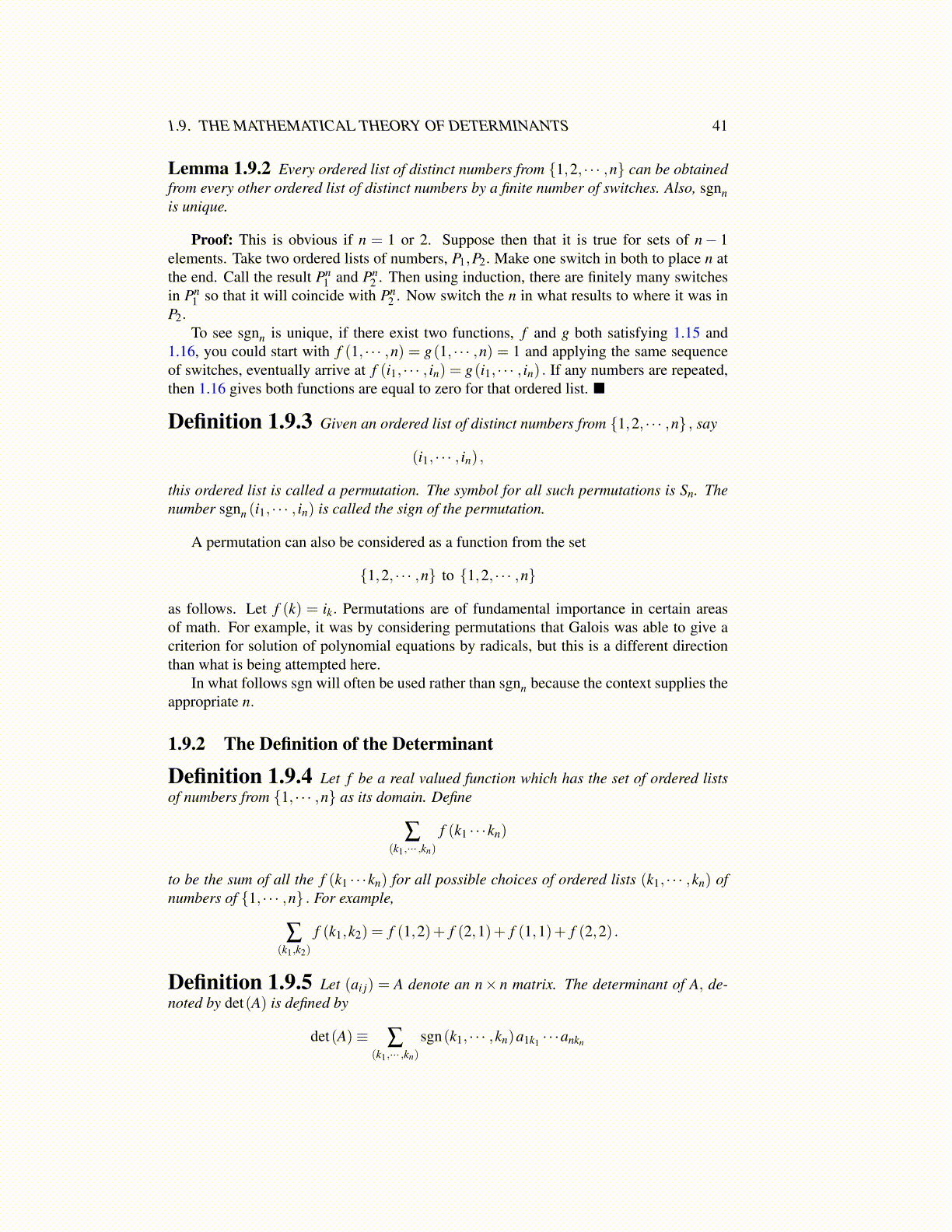
1.9. THE MATHEMATICAL THEORY OF DETERMINANTS 41
Lemma 1.9.2 Every ordered list of distinct numbers from {1,2, · · · ,n} can be obtainedfrom every other ordered list of distinct numbers by a finite number of switches. Also, sgnnis unique.
Proof: This is obvious if n = 1 or 2. Suppose then that it is true for sets of n− 1elements. Take two ordered lists of numbers, P1,P2. Make one switch in both to place n atthe end. Call the result Pn
1 and Pn2 . Then using induction, there are finitely many switches
in Pn1 so that it will coincide with Pn
2 . Now switch the n in what results to where it was inP2.
To see sgnn is unique, if there exist two functions, f and g both satisfying 1.15 and1.16, you could start with f (1, · · · ,n) = g(1, · · · ,n) = 1 and applying the same sequenceof switches, eventually arrive at f (i1, · · · , in) = g(i1, · · · , in) . If any numbers are repeated,then 1.16 gives both functions are equal to zero for that ordered list. ■
Definition 1.9.3 Given an ordered list of distinct numbers from {1,2, · · · ,n} , say
(i1, · · · , in) ,
this ordered list is called a permutation. The symbol for all such permutations is Sn. Thenumber sgnn (i1, · · · , in) is called the sign of the permutation.
A permutation can also be considered as a function from the set
{1,2, · · · ,n} to {1,2, · · · ,n}
as follows. Let f (k) = ik. Permutations are of fundamental importance in certain areasof math. For example, it was by considering permutations that Galois was able to give acriterion for solution of polynomial equations by radicals, but this is a different directionthan what is being attempted here.
In what follows sgn will often be used rather than sgnn because the context supplies theappropriate n.
1.9.2 The Definition of the Determinant
Definition 1.9.4 Let f be a real valued function which has the set of ordered listsof numbers from {1, · · · ,n} as its domain. Define
∑(k1,··· ,kn)
f (k1 · · ·kn)
to be the sum of all the f (k1 · · ·kn) for all possible choices of ordered lists (k1, · · · ,kn) ofnumbers of {1, · · · ,n} . For example,
∑(k1,k2)
f (k1,k2) = f (1,2)+ f (2,1)+ f (1,1)+ f (2,2) .
Definition 1.9.5 Let (ai j) = A denote an n× n matrix. The determinant of A, de-noted by det(A) is defined by
det(A)≡ ∑(k1,··· ,kn)
sgn(k1, · · · ,kn)a1k1 · · ·ankn